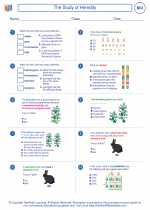Grasslands: An Overview
Grasslands are vast areas covered with grasses and small plants. They are found on every continent except Antarctica and are known by different names in different parts of the world, such as prairies in North America, steppes in Russia, pampas in South America, and veldts in Africa.
Types of Grasslands
There are two main types of grasslands: tropical and temperate. Tropical grasslands, also known as savannas, are located near the equator and have a wet and dry season. Temperate grasslands, on the other hand, are found in areas with cold winters and hot summers, and receive less precipitation than tropical grasslands.
Characteristics of Grasslands
Grasslands are characterized by their vast expanse of grasses, few trees, and diverse range of herbivorous animals. They are also prone to wildfires due to the dry conditions and are often used for grazing by domestic livestock.
Flora and Fauna
Grasslands support a variety of plant and animal species. Common grasses found in grasslands include buffalo grass, blue grama, and ryegrass. Animals that inhabit grasslands include bison, pronghorn, gazelles, and ground-nesting birds like the prairie chicken.
Human Impact
Human activities such as agriculture, urbanization, and overgrazing have significantly impacted grasslands. Conservation efforts are important to protect these ecosystems and the species that depend on them.
Study Guide for Grasslands
- What are the two main types of grasslands and how do they differ?
- Describe the flora and fauna found in grasslands.
- What are the human impacts on grasslands and why is conservation important?
- Explain the role of wildfires in grassland ecosystems.
- Compare and contrast the characteristics of tropical and temperate grasslands.
[Grasslands] Related Worksheets and Study Guides:
.◂Biology Worksheets and Study Guides High School. The Study of Heredity

 Worksheet/Answer key
Worksheet/Answer key
 Vocabulary/Answer key
Vocabulary/Answer key
 Vocabulary/Answer key
Vocabulary/Answer key
 Vocabulary/Answer key
Vocabulary/Answer key
